Today you can rarely meet a room where tiles would not be laid. Physico -...
|
|
The need for reliable, rapidly vested buildings for warehouses, various ... |
Due to the inevitable deterioration of the environmental situation on the planet, as beginners, ... |
Types of radiators and methods for their installation
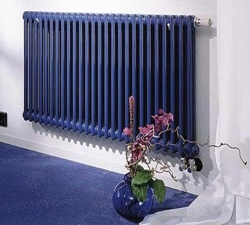
When installing or updating the heating system, it is important to correctly decide which radiators to buy so that they not only fit into the interior harmoniously, but also provide a comfortable microclimate in the room and gave heat well.
Table of contents
- Basic materials for the manufacture of radiators
- Types of radiators
- Comparative characteristics of radiators by manufacturers
- Tips for the installation of radiators
Basic materials for the manufacture of radiators
The choice of materials for the manufacture of heating devices is now very wide. According to this criterion, heating radiators are divided into:
- Steel. They are recommended to be installed in country houses or in apartments, but not with centralized, but with autonomous heating. Before proceeding with installation, it is necessary to check the pressure in the system that should not exceed 8-10 atmospheres. That is why the use of steel batteries in multi -storey buildings is in question. Indeed, in a centralized heating system, pressure often reaches the value of 20-24 atmosphere. The radiator may well not withstand it and explode. Steel heating devices are characterized by slight weight, good heat transfer, ease of installation and low cost. But they are very quickly corroded, especially in an environment with high humidity, so their operation, despite all the statements of manufacturers, does not exceed 15 years. Also, replacing radiators is inevitable if they are installed in a room that is rarely visited. If the water is merged from the system for more than 2 weeks, air enters it, which leads to the fact that the batteries are very quickly covered with rust from the inside.
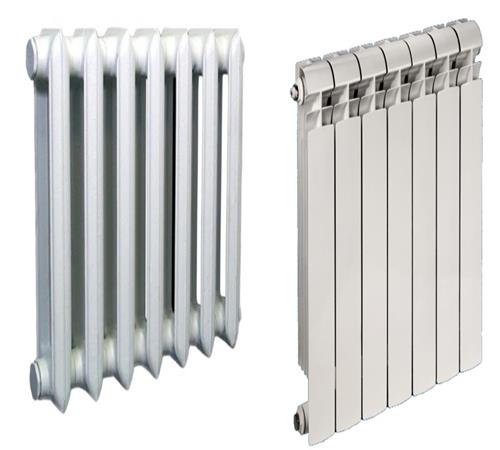
- Cast iron radiators. Their distinctive feature is excellent corrosion resistance. Such radiators will last a very long time and because of a significant wall thickness, which in models of the latest generation reaches 2.5 mm. Therefore, they are suitable for open heating systems with a large concentration of oxygen used in production facilities. Often they are mounted in multi -storey buildings, where in the warm season the water completely merges from the batteries. The excellent resistance of the radiators makes it possible to make them partly and the steam heating system, where the pair temperature often reaches 150 degrees. Cast iron is not a terrible poor quality of the coolant: rust particles and other metal impurities in it, as well as a bulk environment, do not affect the life of batteries, which, in a good layout, is 10-30, and sometimes 50 years. Cast iron heating devices are released with good heat transfer, accompanied by thermal inertia: even an hour after the system is turned off, the residual heat transfer is 30%, while in steel batteries this indicator does not exceed 15%. Of the shortcomings, aesthetic factors are more likely to be distinguished: surface roughness, bulky, unpresentable appearance, as well as a large weight that impedes the installation.
- Aluminum. The most important characteristic of these batteries is significant heat transfer. In the upper section of the aluminum sections there are special holes through which heated air enters the room, creating intensive convection. For this reason, aluminum radiators easily provide uniform heating of the room. They are designed to work in a wide pressure range, an average of 12-18 atm. Aluminum batteries quickly respond to changing the functioning parameters of the heating system. However, it is advisable to install such heating devices only in houses and industrial premises, where it is possible to control the quality of the coolant. The acidity of the liquid flowing through the pipes, that is, its pH, should be within 7-8 units. In addition, gas bubbles are not rarely formed in these batteries, which ultimately leads to the importing of the system.
- Bimetallic. These batteries are made of two metals: steel and aluminum. They are more durable than ordinary aluminum, since in design they are a steel radiator placed in an aluminum cover. As a rule, bimetallic radiators quickly heat up and slowly cool. The quality of the coolant for them does not play a special role, and the permissible value of the pH of the water entering the pipeline rises to 9. Since the bimetallic batteries are not terribly significant working pressure (up to 35 atm) and pneumatic stories, they are mainly not used in private houses, but on enterprises and thermal power plants in fairly aggressive working conditions.
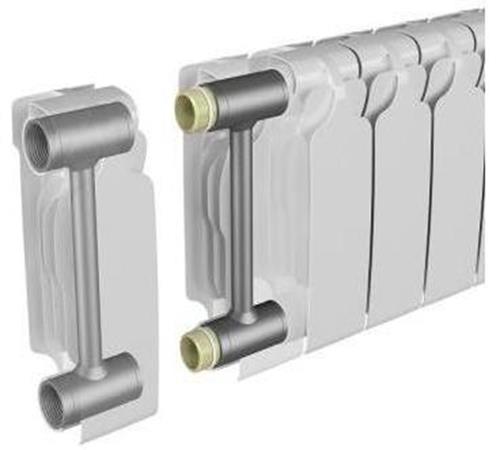
Types of radiators
Heating devices differ not only in manufacturing, but also in design. Depending on it, they distinguish:
- Steel panel radiators. They have a rectangular shape and consist of two steel sheets connected by a welding method. They have scrapped recesses that form the channels through which the coolant circulates. To the back side, to increase heat transfer, steel ribs of the P-shaped form are often welded. The heat transfer area in such batteries is quite large, so the heated air is given to the room intensively. Steel panel batteries are capable of functioning in systems with a working pressure of 6-9 atm and the temperature of a coolant not exceeding 110 degrees. Therefore, usually the range of their use is low -rise construction.
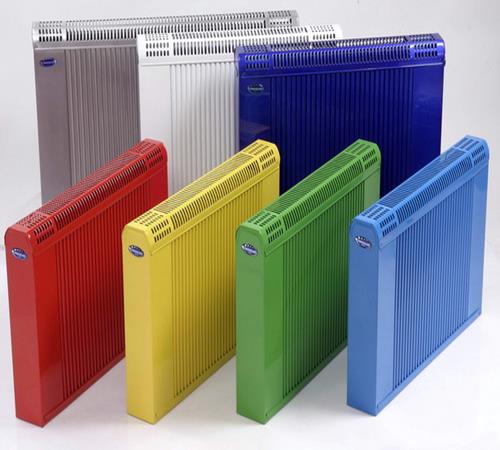
- Steel radiators of a sectional type. The working pressure in the systems in which from which they are mounted should be 10-16 atm. In appearance, sectional heating devices resemble cast -iron models, but the difference lies in the connection method: in the case of cast -iron radiators, the sections are fastened by means of threaded nipples, while in steel batteries, point welding is used. Sectional radiators are more durable and durable than panel, but their cost is quite high.
- Tubular steel radiators. The list of advantages of tubular radiators is quite impressive: this is safety due to the lack of sharp corners, the small volume of the coolant that simplifies the control of them, good heat transfer and high inertia, which allows them to give heat for a long time. These batteries are suitable for installation in systems with a pressure of 10-15 atm and practically exclude leaks, but the thickness of the steel in them does not exceed 1 mm. At the same time, the price remains significant for a similar radiator.
- Whole radiators made of aluminum. They are welded from profiles obtained by extrusion. In the manufacture of models of this type, various additives are not included in aluminum, which allows it to maintain plasticity. Thus, aluminum batteries are resistant to internal hydraulic boards and external mechanical influences. Due to the absence of intersecration gaskets, they are more durable, and in terms of durability, whole aluminum heating devices are not inferior to cast -iron. However, these radiators belong to the category of non -indifferent ones, so it will not be possible to increase them during operation.
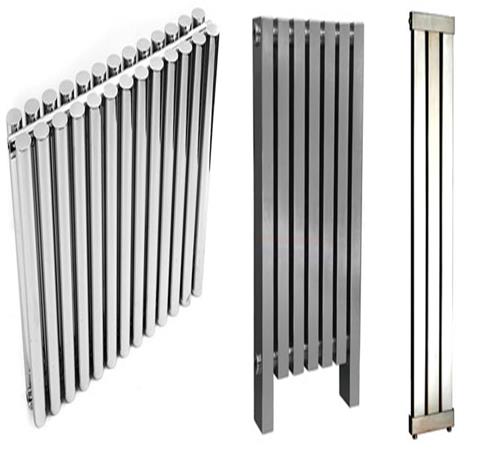
- Aluminum sectional radiators. In them, sections are made with casting under pressure and connected with the use of threaded nipples. The tightness of intersecration compounds is achieved through the use of gaskets from silicone and paronite. If you prefer such heating devices, it will please the possibility of building sections to increase heat transfer, however, a large number of connections negatively affect their reliability.
Comparative characteristics of radiators by manufacturers
There are now a variety of heating devices on sale. We highlight the most popular among them:
- Global radiators (Italy). The company was founded in the Italian province of Bergamo in 1971, it has been represented in the Russian market since 1994. These aluminum heating devices are distinguished by a long life, excellent heat efficiency and withstand pressure up to 16 atm. But at the same time, they should only be used in heating systems with a purified coolant, since poor physico-chemical indicators of water in the pipeline contribute to their rapid disbandment. Prices for them range in a wide range, amounting to 10 to 110 dollars, depending on the size and heat transfer of the radiator.
- Kermi (Germany) steel radiators. In the lineup there are batteries designed for both lower and lateral connection. The pressure in the heating system when using them should not exceed 10 bar, and the temperature of the coolant is 110 degrees. Such radiators are suitable for a wide variety of pipelines and impressed with high heat transfer and the possibility of installing thermal controllers. The manufacturer is an old company founded in 1874 and specializing in the production of radiators, convectors and floor heating. Of the shortcomings, we highlight the tendency to corrosion, which significantly reduces the life of the batteries. The cost of radiators ranges from 22 to 200 euros.
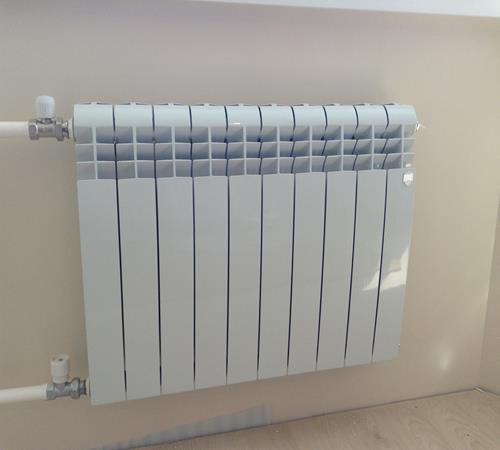
- Radiators from cast iron RD-100 (Ukraine). Since 2003, they have been produced by the Lugansk foundry and mechanical plant. Batteries meet all modern standards, differing in low susceptibility to the quality of the coolant, increased efficiency, low hydraulic resistance and high strength. However, the installation of radiators of this type is quite complicated due to the large weight. The cost of the section as a whole is from $ 7.5.
- Bimetallic batteries Royal Thermo (Italy). This trademark appeared on the market at the end of the last century, and since 1998 he has been supplying its products to the countries of Eastern Europe. Their advantage is the special technology of InoxPro corrosion protection, which allows the use of heating devices in systems with poor -quality coolant. The porcaric form of the profile makes it possible to significantly increase the intensity of convection air flows, and hence to ensure high -quality heating of the room. The cost of batteries is 60-350 dollars.
In terms of price-quality ratio, the most optimal option will be the Royal Thermo bimetal radiator, which is excellent for domestic heating systems with a large number of impurities in the coolant.
Tips for the installation of radiators
Even for a beginner installation of radiators, it will not be so difficult. It will need a wrench, pliers, the radiator itself, locking valves, couplings, corners, drives and bushings, a bypass for a single -pipe system, Maevsky crane, which is necessary for air release from the system. Now we are actually starting to the installation:
- We determine the type of heating system: one -pipe or two -pipe.
- We mount the elements of the pipeline suitable for heating devices, so that one meter of the pipe has a slope in the direction of movement of the coolant at least 0.5 cm. The distance from the floor to the radiator should be made 6-10 cm, and from the lower part of the windowsill to the top of the battery 5 -10 cm. Between the heating device and the wall, we leave a gap of 3-5 cm.
- We note the places in which the brackets will be installed, and carefully verify the distances between them. According to the rules, one bracket is needed per square meter of the radiator area.
- We drill holes for the brackets and insert the dowels into them, into which the fasteners are screwed, and the radiator is installed on them.
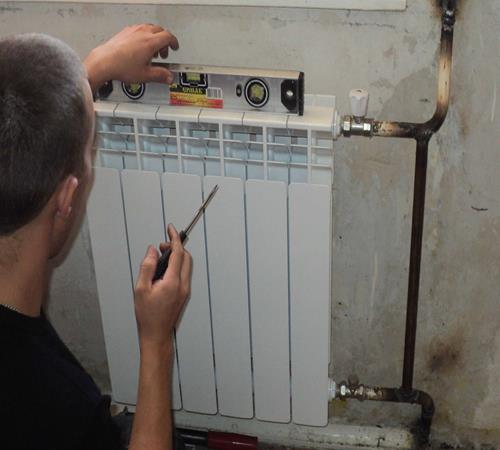
At the next stage, the contractor will need dynamometric keys that allow you to observe a dynamometric moment and avoid excessive overthrow and insufficient tightness. A special sealing ribbon, Packla, lowered in oil paint, or sealant will also be required. After that, it is necessary:
- Completely drain the water from the system.
- Using the level, check the position of the horizontal and vertical batteries hung on the supports.
- Remove all the plugs from the radiator.
- For a single -pipe circuit, connect the bypass equipped with a valve. For a two -pipe system, the connection is made by means of carving, the joints between which are sealed with any seal.
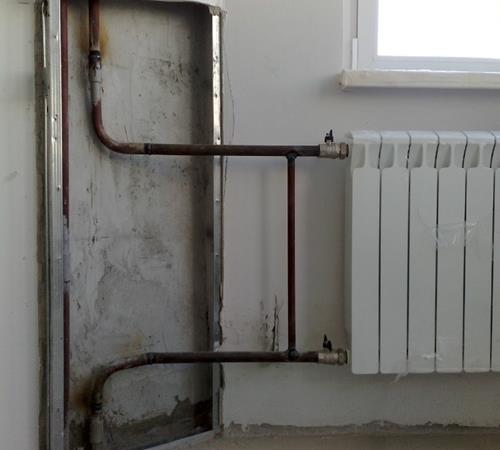
Cast iron batteries are installed almost the same, except that they cannot be mounted on wooden walls due to the large weight. Therefore, special floor supports are used for them. Also, radiators from cast iron must be developed before installation, adjust the nipples and re -assemble from the number of sections necessary for heating a specific room. The disassembly is made on a workbench using two radiator keys and preferably together, because in order to prevent skew, both the upper and lower nipples must be unscrewed at the same time. At the final stage, it is recommended to undergo pressure testing, for which it is better to contact a specialist.

lord, how much nonsense ... in
lord, how much nonsense ... "In a centralized heating system, pressure often reaches the value of 20-24 atmosphere" and much more ...